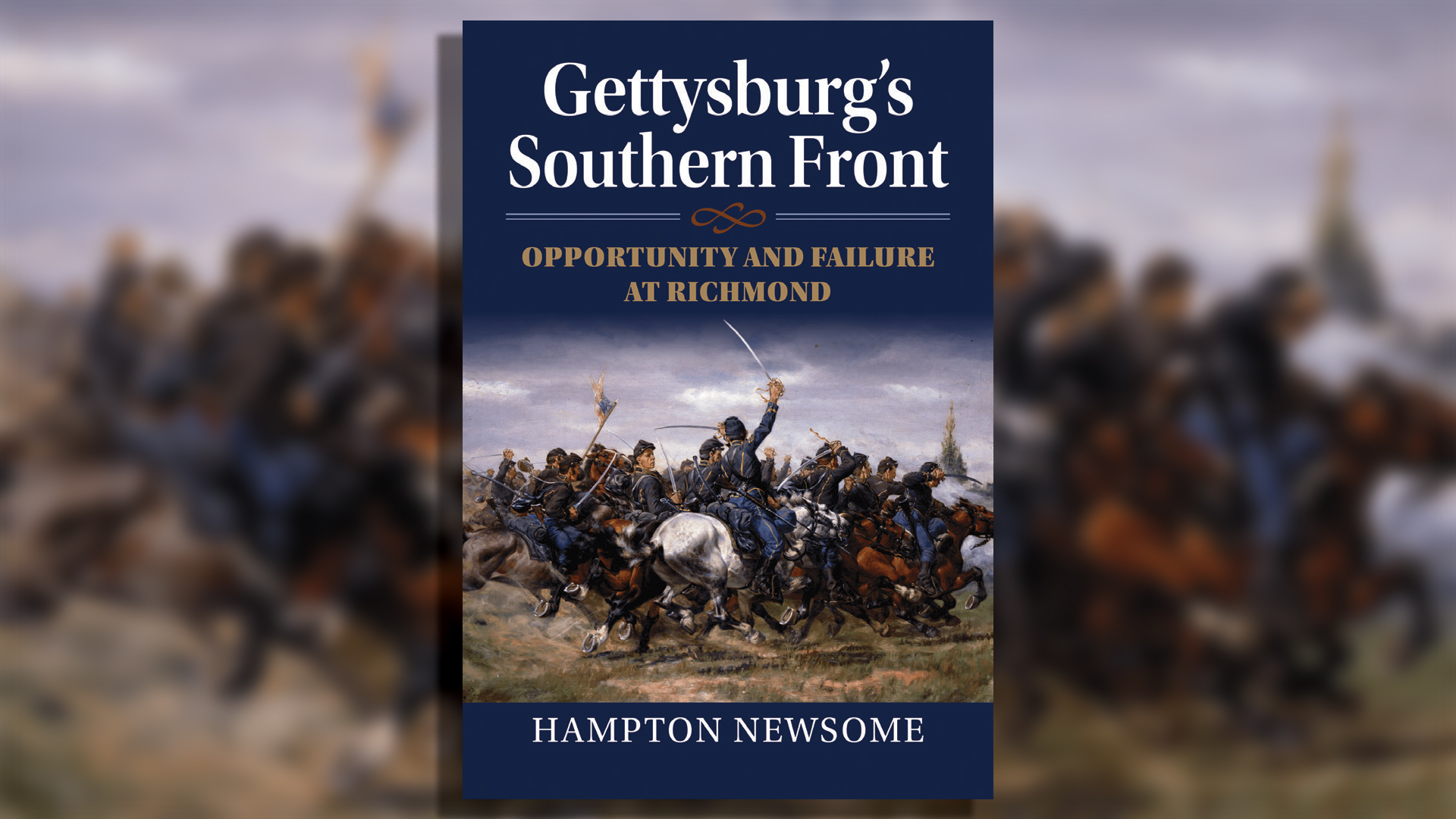Gettysburg's Southern Front
Opportunity and Failure at Richmond
Reviewed by John R Maass
Article published on: August 1, 2024 in the Army History Fall 2024 issue
Read Time: < 4 mins

By Hampton Newsome
University Press of Kansas, 2022 Pp. vii, 411. $29.95
The title of this book is oddly misleading. The term front was not used during the American Civil War, as author Hampton Newsome intends. Moreover, although the U.S. Army’s operations around Richmond in 1863 were related tangentially to the Gettysburg campaign, their limited success, distance from the great battle in Pennsylvania, and relative insignificance in the minds of the U.S. Army high command make a weak connection to the Confederate invasion of the North.
This initial observation aside, Newsome’s work is a well-researched, clear account of the little-known U.S. Army operations around Richmond during the summer of 1863, supported by several helpful maps. These movements were intended to interrupt Confederate logistics and threaten the Confederate capital when General Robert E.Lee moved north into Pennsylvania and subsequently fought the battle of Gettysburg. The rail lines running northland west from the Richmond area were the chief targets of Army commanders, who also knew that the Confederate capital would be guarded lightly. The author holds that the failure of these operations was a lost opportunity to capture Richmond and seriously damage Confederate supply efforts that summer. It was a “smallmouth-overlooked component of the massive operations, taking place during the Gettysburg campaign,” Newsome contends (2).
The author begins his study with Lee’s invasion of Pennsylvania and the efforts of General Chief Henry W. Halleck to counter this danger. Part of his plan was to task Maj. Gen. John A. Dix, commander of the Department of Virginia headquartered at Fort Monroe in Hampton (in the coastal Tidewater region), with threatening Richmond and destroying the railroad bridges over the North and South Anna Rivers in Hanover County, north of the city. Supplies moved from Richmond along the Virginia Central Railroad west to Staunton, then by wagons in the wake of Lee’s army. Trains on this rail line had to cross the South Anna River, and thus, the bridge there became the target. Another objective was the Richmond, Fredericksburg, and Potomac railroad bridges that crossed over both the North and South Anna Rivers.
General Dix was a curious choice to lead the expedition from Fort Monroe, as he was not known as an aggressive, fast-moving leader. Almost 65 years old when the raid began, he was a War of 1812 veteran and had resigned from the U.S. Army in 1828. He moved 20,000 largely inexperienced troops west to White House Landing on the Pamunkey River, soldiers of the IV and VII Corps commanded by Maj. Gen. Erasmus D. Keyes and Brig. Gen. George W. Getty, respectively. From here, the troops launched their raid on 23 June in what Newsome aptly calls “a story of might-have-beens, confusion, and failure” (5).
Dix developed a two-part plan of attack. The IV Corps under Keyes would advance toward Richmond by way of Bottoms Bridge on the Chickahominy River in a feint to hold the defenders of the capital in their trenches, while the VII Corps under Getty would move rapidly to destroy the railroad bridges in Hanover County. Getty’s “entire purpose was to generate a vigorous demonstration and prevent the Confederates from sending troops north to repel Gettys column at the railroad bridges in Hanover” (179).
Newsome gives a highly detailed account of both columns’ movements and attacks and is adept at describing the marches and skirmishes. Col. Samuel P. Spear led the expedition to destroy Virginia Central’s South Anna River bridge with his 11th Pennsylvania Cavalry. Along the way near Ashland, this column captured rebel cavalry commander Brig. Gen. William Henry Fitzhugh “Rooney” Lee, who was recuperating from a wound in Hanover. The bluecoats attacked the bridge and burned it after pushing off rebel defenders. However, Spear did not destroy the wooden Richmond, Fredericksburg, and Potomac trestle just a few miles away, which significantly limited the effectiveness of the expedition.
To the south, Keyes’ troops made little impression on Richmond’s Confederates under the overall command of Lt. Gen. D.H. Hill. Newsome provides details onan action at Crump’s Crossroads, betweenBottoms Bridge and White House on 2 July, which stopped the Army forces in theirtracks due to Keyes’s ineptitude. The rebels’ successful defense of the city is surprising,given that their command structure wasoverlapping and ineffective, the troopswere spread out in too many locations,and several of their top generals were notup to the job.
Newsome concludes his study by noting that the Lincoln Administration was disappointed with the insignificant results achieved by Dix. Secretary of War Edwin M.Stanton likewise thought the operationwas a “waste of force” (277), and therewas even disagreement afterward about whether capturing Richmond was the main objective of the expedition or not. “In the end, it was clear that the federal effort to cut Lee’s communications had failed to generate decisive results” (286).
Author
Dr. John R. Maass is a historian at the National Museum of the United States Army at Fort Belvoir, Virginia.